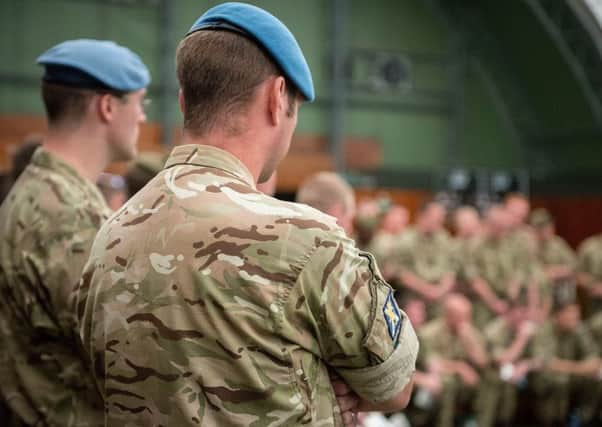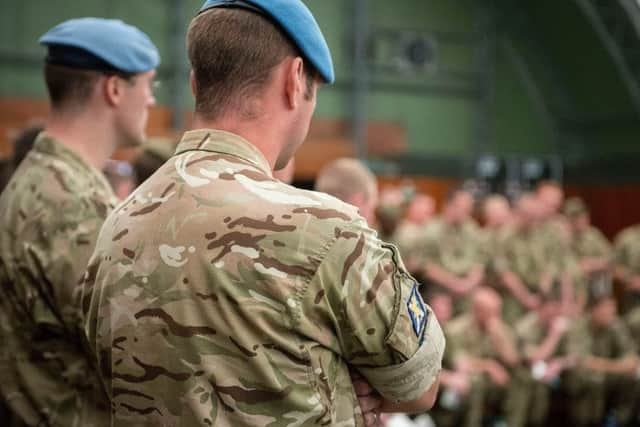1 SCOTS in UN Cyprus mission


The troops from the Borders’ local infantry battalion, the Royal Scots Borderers (1 SCOTS), are heading for the divided Mediterranean island - with support from 2nd Battalion, Royal Irish Regiment - in the next few weeks, where they will form part of Operation Tosca.
This is the codename for part of the United Kingdom’s commitment to the ongoing UN peacekeeping mission to Nicosia in Cyprus.
Advertisement
Hide AdAdvertisement
Hide AdThese soldiers serve on a six-month tour of duty as unarmed UN troops and are responsible for maintaining the integrity of the buffer zone that runs between Greek and Turkish Cypriot-controlled areas.


The command includes the island’s capital Nicosia, and the soldiers wear the famous UN blue berets.
On arrival in Cyprus, the soldiers will take over from the Black Watch (3 SCOTS) and patrol a corridor through Nicosia that weaves between buildings that have remained in ruins for 40 years.
Captain Nick Bowler explained that 250 soldiers from the battalion will be deploying to Cyprus, supported by 38 members of the Royal Irish Regiment.
Advertisement
Hide AdAdvertisement
Hide AdBattalion members are currently training their public order skills to enable them to deal with potential problems, such as riots, missiles being thrown and petrol bombs.
And while, members of the battalion have served in Cyprus before, this is the first time the whole battalion is being deployed.
“We will be heading out at the end of September until March and it’s good that the whole battalion is going as it allows us to focus on training altogether, instead of having personnel scattered all over the place,” he said.
Cyprus has been divided since 1974 when Turkey invaded the north in response to a military coup on the island which was backed by the Athens government.
Advertisement
Hide AdAdvertisement
Hide AdIt was in 1974 that Cyprus was effectively partitioned with the northern third inhabited by Turkish Cypriots and the southern two-thirds by Greek Cypriots.
The UN estimates some 165,000 Greek Cypriots fled or were expelled from the north, and 45,000 Turkish Cypriots from the south.
The UN Buffer Zone, known as the ‘Green Line’, divides the two parts from Morphou through Nicosia to Famagusta, and is patrolled by UN troops.
The UN created the Green Line as a ceasefire line in 1963 after becoming involved in an attempt to end the tension.
Advertisement
Hide AdAdvertisement
Hide AdCyprus joined the EU in 2004 as a divided island. The status of Northern Cyprus as a separate entity is recognised only by Turkey after the area declared itself the Turkish Republic of Northern Cyprus in the early 1980s.
However, there is fresh hope after it was reported last month that UN-sponsored talks on reunifying Cyprus had resumed in a “prevailing positive climate.”
Turkish Cypriot leader, Mustafa Akinci, said it could be “a matter of months, rather than years, to solve the problem,” while Greek Cypriot leader Nicos Anastasiades, said there was “mutual understanding.”